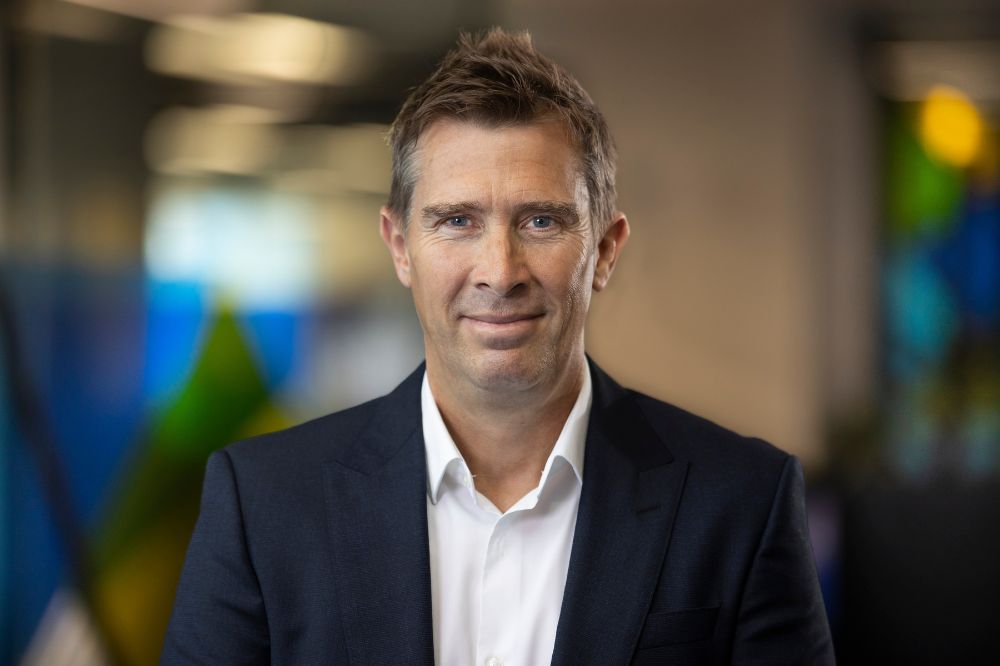Tower CEO on operating in a “changing” environment

Tower CEO on operating in a “changing” environment | Insurance Business New Zealand
Catastrophe & Flood
Tower CEO on operating in a “changing” environment
He says it’s critical that New Zealand maintains a strong insurance industry
Catastrophe & Flood
By
Terry Gangcuangco
Tower Limited chief executive Blair Turnbull (pictured) believes it’s critical that New Zealand maintains a strong insurance industry amid a changing climate and risk environment.
As reported, the Kiwi insurer’s financial results for the half year to March 31 took a beating due to large event costs worth $33.9 million – excluding which underlying profit was up 30%. Loss after taxation for the period amounted to $5.1 million, and Tower’s combined operating ratio stood at 105.3% because of the large event costs.
During Thursday’s investor call, Turnbull said: “Today’s results demonstrate that we are operating in a changing climate and risk environment. As we navigate this new normal it is critical that New Zealand maintains a strong insurance industry for the future.
“We intend to be here for the long term, to continue to thrive and deliver value to our customers and communities, our people and our shareholders.”
Climate-related weather impacts
According to the CEO, Tower is being proactive in its management of the impacts of climate-related weather events. Turnbull cited, among others, Tower’s risk-based pricing. He pointed out that, since Tower implemented its flood modelling in 2021, the company has tested its model against the actual impacts of subsequent flood events, with a ‘close match’ every time.
“While the most recent floods were particularly severe, our testing has confirmed that they followed the patterns we had modelled, which continues to give us confidence in the accuracy of our pricing and underwriting,” Turnbull said. “Additionally, we are actively working to improve and refine our risk-based pricing to ensure we further protect the business from the volatility of weather events.
“Immediately following the events this first half, we implemented heightened risk selection criteria for landslide risks. We have also increased the weighting we put on the flood risk portion of customer premiums to ensure our pricing accurately reflects the changing risk profile.”
The CEO, on Thursday, took the time to illustrate the changes in catastrophic events over the years.
“The frequency of disaster events in New Zealand has been increasing steadily since the late 1960s and then accelerating more recently,” noted the Tower boss. “Prior to 2023, the 10-year rolling average of large event costs for Tower was around $14 million a year, while 2023 looks very different with total event costs for the 12 months ending March 31 at a record high of $294 million.
“Tower is continuously monitoring these trends and has important mitigations in place to help manage these risks – primarily through our risk-based pricing approach and our robust reinsurance programme which has provided protection from the catastrophe events experienced in New Zealand this half.”
Talking about reinsurance for the half year, Turnbull went on to tell investors: “We have completed approximately 30% of claims for the Auckland & Upper North Island weather event and Cyclone Gabrielle. Around 5% of claims for Cyclones Judy and Kevin have been settled, and we are working efficiently to close the remainder.
“These events are predominantly covered by reinsurance with the cost to Tower for each of the Auckland & Upper North Island weather events and Cyclone Gabrielle limited to an $11.9 million excess. The estimated impact of the Vanuatu cyclones is $10 million net of reinsurance recoveries. Accordingly, we have increased our FY23 large events allowance to $50 million net of reinsurance recoveries, up from $40 million.”
Meanwhile the insurer, which expects to be profitable for the year, is working to expand its hazard model to include landslide and coastal hazards. According to Turnbull, Tower plans to implement automated pricing for these risks in the second half.
What do you think about this story? Share your thoughts in the comments below.
Related Stories
Keep up with the latest news and events
Join our mailing list, it’s free!






